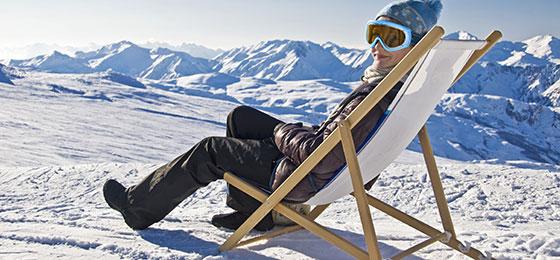Daily doses of vitamin D are unreachable during Swiss winter

A study funded by the SNSF shows that in winter, weak sunlight prevents the Swiss population from producing sufficient levels of vitamin D.
Too much sun increases the risk of skin cancer. But moderate exposure is required to produce vitamin D. This substance is essential for bone health and may also play a role in preventing respiratory infections, autoimmune diseases and certain types of cancer.
A new study shows that in Switzerland, between the end of autumn and the beginning of spring, sunlight does not even come close to providing the daily dose of 0.024 milligrams of vitamin D recommended by the World Health Organization (WHO). The study was supported by the Swiss National Science Foundation (SNSF) and has been published in the Journal of Exposure Science and Environmental Epidemiology. (*)
The researchers measured the intensity of solar UV irradiation in Switzerland for a year and used the resulting data to create a computer simulation. The simulation enabled a precise estimation of the impact of sunlight on the production of vitamin D as well as the risks of sunburn.
Winter is problematic
In summer, synthesising vitamin D is straightforward: at mid-day, it takes a person wearing a T-shirt (22% of uncovered skin) just 10 to 15 minutes to produce the recommended daily dose. But sunburn can occur around ten minutes later, which increases the risk of developing skin cancer.
In winter, the situation is different. Generally speaking, less skin – around 8%, representing the face and hands – is left uncovered. Moreover, solar UV irradiation is weaker owing to the longer distance the rays must travel through the atmosphere. Under these circumstances, it takes at least six and a half hours of exposure to produce the recommended dose of vitamin D. Not only is such exposure difficult to achieve, but sunburn would occur before the daily dose is reached. “This is due both to the spectral characteristics of winter irradiation and its concentration on small areas of the skin,” says David Vernez, project head and a specialist in estimating risks at the Center for Primary Care and Public Health (Unisanté) in Lausanne. “Fortunately, it’s not all that easy to do.”
The big surprise of this study was the marked difference between summer and winter. “In Switzerland, it is practically impossible to produce enough vitamin D to achieve the WHO recommendations in every season,” says Vernez. Even with less conservative recommendations, the odds are against it.
Computer simulation and field data
To obtain their results, the team brought together specialists in public health, meteorology, computer science and nutrition to create a simulation of solar exposure. In particular, the algorithms are able to predict the amount of vitamin D produced and to estimate the risks of sunburn for the two skin types that are most common in Switzerland.
The computer model uses as input data on sunlight collected at four weather stations representing the country’s diverse environments throughout the year. To more precisely estimate the amount of UV irradiation in Switzerland, the researchers also used ozone measurements from the EOS Aura satellite operated by NASA.
This work confirmed the environmental origin of the seasonal deficiency of vitamin D observed in the Swiss population. But many questions remain, such as the daily recommendations, which can vary by as much as 100%, and the importance of food supplements. “For the moment, our chief recommendation is to avoid solariums in winter,” says Vernez. “The risk of skin cancer far outweighs any possible benefits.”
This study was funded by the Swiss National Science Foundation. It was headed by David Vernez of the Institute for Work and Health (IST) of the Universities of Lausanne and Geneva, the Institute of Social and Preventive Medicine (IUMSP) at the Lausanne University Hospital (CHUV) in collaboration with the Computer Science Centre (CUI) of the University of Geneva, as well as the Federal Office of Meteorology and Climatology (MeteoSwiss).
(*) A. Religi & C. Backes, A. Chatelan, J-L. Bulliard, L. Vuilleumier, L. Moccozet, M. Bochud, D. Vernez, Estimation of exposure durations for vitamin D production and sunburn risk in Switzerland. Journal of Exposure Science and Environmental Epidemiology (2019). doi:10.1038/s41370-
Contact
Arianna Religi
Centre Universitaire d'Informatique (CUI)
Battelle - bâtiment A
7, route de Drize
CH-1227 Carouge
E-mail